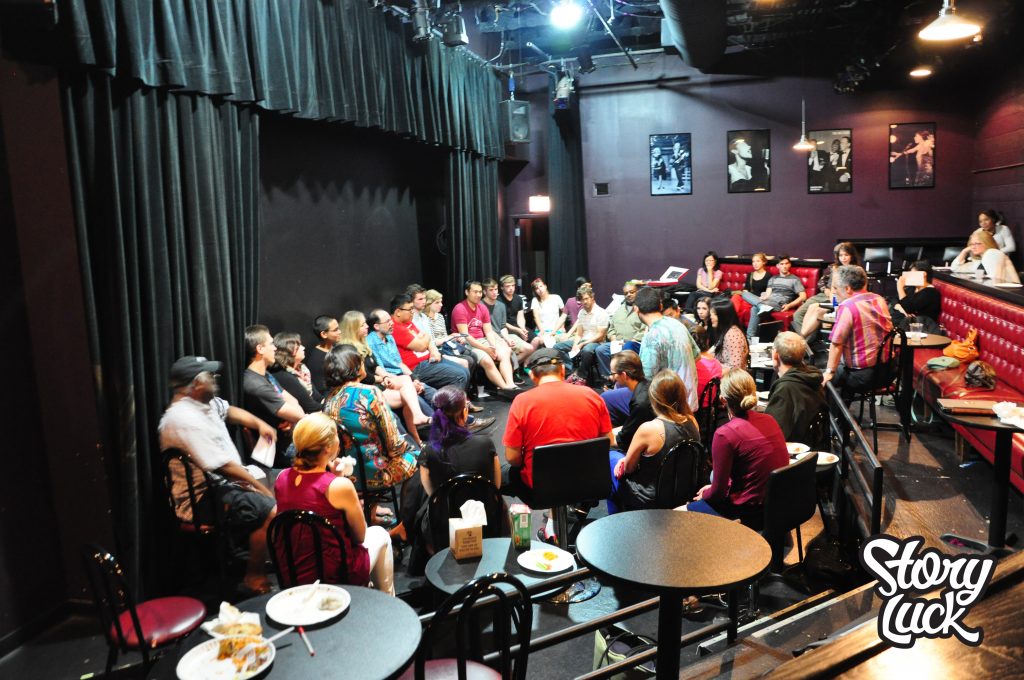These posts are adapted from the 20 minute lessons on story telling presented by Dan at the beginning of our Workshop! Workshop! show.
In storytelling you are always aware, as narrator, that the audience is there. You’re talking directly to specific people in that crowd, you’re making eye contact and connecting with them. One trick to help you with this is to look at a specific person. Choose someone to connect to, and the audience will get that, and resonate with it. (Pick someone who is getting the story, not the guy with his arms folded or scratching his balls.)

In the bear example from the other day, imagine this bear is coming at me, and he’s coming, and then he’s getting closer, and closer. It doesn’t take a dramatic hand motion where you point and say, “Oh no! He’s getting closer and closer!” But that’s one technique you can use to illustrate what’s going on.
If you are visualizing the bear, you can do that both as the character and the narrator. As the character you are in one place, and then when you switch modes, and are back in your narratorial voice, you can still see and track where you placed the bear on stage. The audience will be able to understand it’s position. This is sometimes called object permanence work. You do this naturally when you tell a story. You already do it, but as you become aware of it, you’ll quickly start to do it better. Because you’ll be doing it as a choice.
If you are the character being conjured by the narrator, the audience will see you visualizing the bear. The audience is hyper perceptive, they are imagining what you’re imagining. They can see you tensing up your body and you can hold that tension for a moment, and then you can pull away and say, “As you see, I’m lucky to be alive right!”
What’s happening when you make that kind of aside is that you’re shifting from being the character to being the narrator. That draws the audience in closer to you. It draws the audience up on stage with you; they are looking at you observing your character. Meanwhile, everything you’ve created in their minds – people or bears or whatever – continues to exist in that space even when you’re the narrator. Those characters are frozen in place on the stage, frozen in their imagination. You’ve brought the audience in, side by side, with you the narrator.
That’s the the beauty of storytelling. In a movie or play, you’re a voyeur. A good story brings them to your side and you create a communicative bond that way.
I wrote about this yesterday and you can see all my articles on classes by checking here.


